 The Art and Science of Financial ModelingThe Art and Science of Financial ModelingAnurag Singal
The Art and Science of Financial ModelingThe Art and Science of Financial ModelingAnurag Singal The Art and Science of Financial Modeling Copyright Business Expert Press, LLC, 2018. All rights reserved. No part of this publication may be reproduced, stored in a retrieval system, or transmitted in any form or by any meanselectronic, mechanical, photocopy, recording, or any other except for brief quotations, not to exceed 400 words, without the prior permission of the publisher. First published in 2018 by Business Expert Press, LLC 222 East 46th Street, New York, NY 10017 www.businessexpertpress.com ISBN-13: 978-1-94897-694-7 (paperback) ISBN-13: 978-1-94897-695-4 (e-book) Business Expert Press Finance and Financial Management Collection Collection ISSN: 2331-0049 (print) Collection ISSN: 2331-0057 (electronic) Cover and interior design by Exeter Premedia Services Private Ltd., Chennai, India First edition: 2018 10 9 8 7 6 5 4 3 2 1 Printed in the United States of America. Abstract To use a clich, we live in a volatile uncertain complex and ambiguous (VUCA) world. Organizations simply cannot afford to try out new strategies in reality and correct mistakes, once theyve occurred.
The Art and Science of Financial Modeling Copyright Business Expert Press, LLC, 2018. All rights reserved. No part of this publication may be reproduced, stored in a retrieval system, or transmitted in any form or by any meanselectronic, mechanical, photocopy, recording, or any other except for brief quotations, not to exceed 400 words, without the prior permission of the publisher. First published in 2018 by Business Expert Press, LLC 222 East 46th Street, New York, NY 10017 www.businessexpertpress.com ISBN-13: 978-1-94897-694-7 (paperback) ISBN-13: 978-1-94897-695-4 (e-book) Business Expert Press Finance and Financial Management Collection Collection ISSN: 2331-0049 (print) Collection ISSN: 2331-0057 (electronic) Cover and interior design by Exeter Premedia Services Private Ltd., Chennai, India First edition: 2018 10 9 8 7 6 5 4 3 2 1 Printed in the United States of America. Abstract To use a clich, we live in a volatile uncertain complex and ambiguous (VUCA) world. Organizations simply cannot afford to try out new strategies in reality and correct mistakes, once theyve occurred.
The stakes are too high. Thus emerges the utility of this technique across functions like financial planning and risk management. Financial models help a business manager simulate the future and see the impact of their change, without risking costly setbacks of real world trials and errors. Mastering the art of financial modeling is imperative for those who want to enter the ultra-competitive world of corporate finance, investment banking, private equity, or equity research. Only those who excel (pun intended) in modeling early on are often the most successful long-term. The book will help readers dive deep into the vocabulary and the syntax, the art and science of financial modeling and valuation.
Readers will be able to prepare/use existing models more competently, interpret the results and have greater comfort over the integrity and accuracy of the models calculations. Keywords cash flow at risk, corporate finance, financial analysis and modeling, financial modeling, how to build a financial model, investment banking, mergers and acquisitions, startup valuation, valuation ContentsWhat Is a Financial Model?Let our advance worrying become advance thinking and planning. Winston Churchill In times when the demand-supply equation may not really be conducive to business operations or may undergo erratic swings, corporate needs to have a dynamic mechanism to gauge the likely impact of the market turbulence on their fortunes and thus arises the need for financial modeling. Among the various possible uses of the same, generating the revenue and expense forecasts is of paramount importance. In conjunction with the proposed capital expenditure plans and debt servicing obligations of the company, this could be a source of crucial insights for decision-making and foresee the possible scenarios of profitability and liquidity. Often we build calculations depicting a real life situation, quantifying inputs/outputs of an operation or a process. We call it a calculation as long as quantum of variables and scenarios are limited.
As you continue to add variables and scenarios, it takes the shape of model. In a nutshell, a model is nothing but a series of calculations (simple and/or complex) structured in a particular fashion so that its comprehensible. The exercise would then act as a baseline for managements adoption of contingency measures: Sprucing up their marketing efforts to streamline revenues or adopting cost-rationalization initiatives Scaling down of capex plans (or alternatively prioritizing between various projects) determine how much investment capital is required and thus scout for additional funding (if required) Undertaking production cuts, as deemed to be appropriate, to prevent inventory build-up beyond tolerable limits While the measures as outlined above could vary according to the unique business dynamics of the various segments of the company, it goes without saying that the exercise of creating a sound financial model would go a long way in helping management cope with uncertainty and focus on the value-creation process for stake-holders. Companies require robust financial models to help them in analyzing the complexities of the geographies where they operate, consider multiple currencies in their projections, evaluate varying capacity as well as capacity utilizations combinations to find out the optimal capacity under varying industry demand-supply scenarios and a host of similar cases. Part Science, Part Art Building models is a fluid, creative activity, and there are as many ways to build a model as, say, to write a book. Most of them will result in working models, but not necessarily very good ones; there are, after all, bad books.
But there are also excellent books with very different styles. Financial modeling is an art form; to the purest MS Excel guru or financial theorist, the ability to model out a concept in your own unique style is the ultimate form of professional expression. You live and breathe a model from its inception, through multiple iterations, until its completion. Financial modeling is part science and part art. Maybe the art part is just 10 percent but this 10 percent can change valuation from 1 Bn to 10 Bn (If not 100!). There are so many variables that impact valuation and assigning weightages to them is what the art is.
A modeler must be a good mathematician as well as someone who can think creatively and who possesses sound logic in order to pre-empt possible outcomes and make sound and reasonable assumptions about the business. Like a fortune teller, you need to be able to read the situation and ask the right questions, assess possible roadblocks and side-step potential pitfalls. The process should always be a deliberate and thoughtful process. Spend enough time on it, step into the shoes of the user and play the Devils Advocate. Its the absolute confidence and familiarity with your model that will let you take the investors questions head on and show that cool Steve Jobs-esque confidence in the face of difficult questions. Plus no matter how complex be the underlying logic, your models should be SIMPLE TO UNDERSTAND.
The intellect and interest lies in making a simple, scalable and robust model. Concept So lets say, you have a power plant as follows:  You can build a working model of the power plant. So, a model is a representation, generally in miniature, to show the construction or appearance of something. Definition The Oxford Dictionary defines the word model as a simplified mathematical description of a business/process. Model is a representation of reality.
You can build a working model of the power plant. So, a model is a representation, generally in miniature, to show the construction or appearance of something. Definition The Oxford Dictionary defines the word model as a simplified mathematical description of a business/process. Model is a representation of reality.  What Is a Financial Model? It is a simplified representation of company performance-both past and future performance.
What Is a Financial Model? It is a simplified representation of company performance-both past and future performance.
In other words, financial modeling is the task of building an abstract representation of a financial decision making situation. A mathematical model is designed to represent the anticipated performance of a financial asset or a portfolio of a business, a project, or any other form of financial investment. A typical financial model would enable simulation of cost and revenue relations to support business decisions. It is prepared whenever any organization is considering project finance, bidding for a project, evaluating acquisition target, carrying out periodic financial planning, conducting capital structure studies, and so on.
Next page
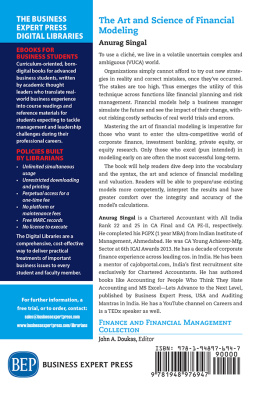
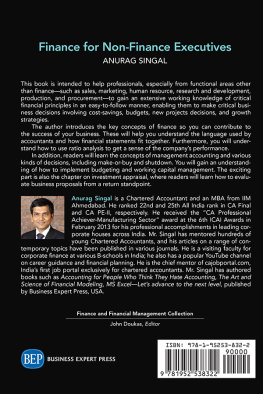
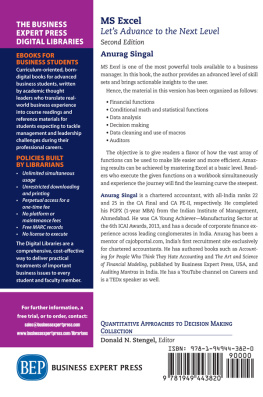

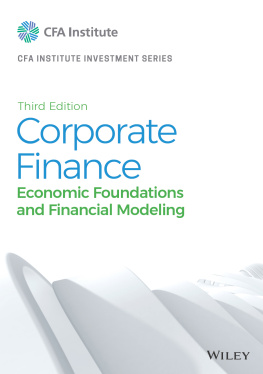

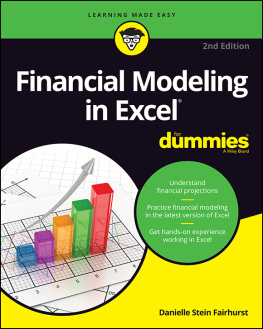
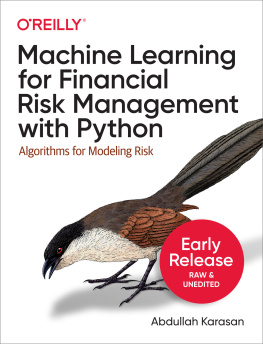

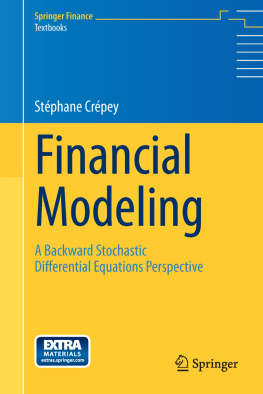
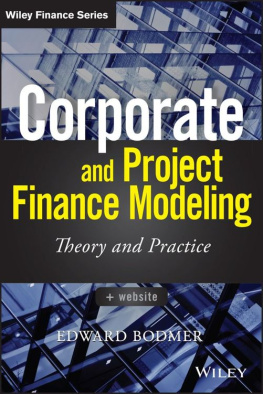
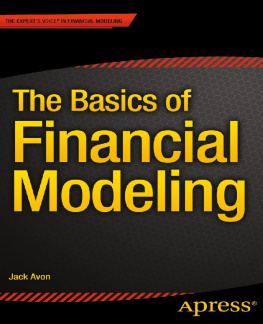
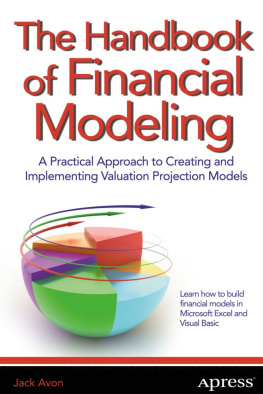
 The Art and Science of Financial ModelingThe Art and Science of Financial ModelingAnurag Singal
The Art and Science of Financial ModelingThe Art and Science of Financial ModelingAnurag Singal The Art and Science of Financial Modeling Copyright Business Expert Press, LLC, 2018. All rights reserved. No part of this publication may be reproduced, stored in a retrieval system, or transmitted in any form or by any meanselectronic, mechanical, photocopy, recording, or any other except for brief quotations, not to exceed 400 words, without the prior permission of the publisher. First published in 2018 by Business Expert Press, LLC 222 East 46th Street, New York, NY 10017 www.businessexpertpress.com ISBN-13: 978-1-94897-694-7 (paperback) ISBN-13: 978-1-94897-695-4 (e-book) Business Expert Press Finance and Financial Management Collection Collection ISSN: 2331-0049 (print) Collection ISSN: 2331-0057 (electronic) Cover and interior design by Exeter Premedia Services Private Ltd., Chennai, India First edition: 2018 10 9 8 7 6 5 4 3 2 1 Printed in the United States of America. Abstract To use a clich, we live in a volatile uncertain complex and ambiguous (VUCA) world. Organizations simply cannot afford to try out new strategies in reality and correct mistakes, once theyve occurred.
The Art and Science of Financial Modeling Copyright Business Expert Press, LLC, 2018. All rights reserved. No part of this publication may be reproduced, stored in a retrieval system, or transmitted in any form or by any meanselectronic, mechanical, photocopy, recording, or any other except for brief quotations, not to exceed 400 words, without the prior permission of the publisher. First published in 2018 by Business Expert Press, LLC 222 East 46th Street, New York, NY 10017 www.businessexpertpress.com ISBN-13: 978-1-94897-694-7 (paperback) ISBN-13: 978-1-94897-695-4 (e-book) Business Expert Press Finance and Financial Management Collection Collection ISSN: 2331-0049 (print) Collection ISSN: 2331-0057 (electronic) Cover and interior design by Exeter Premedia Services Private Ltd., Chennai, India First edition: 2018 10 9 8 7 6 5 4 3 2 1 Printed in the United States of America. Abstract To use a clich, we live in a volatile uncertain complex and ambiguous (VUCA) world. Organizations simply cannot afford to try out new strategies in reality and correct mistakes, once theyve occurred. You can build a working model of the power plant. So, a model is a representation, generally in miniature, to show the construction or appearance of something. Definition The Oxford Dictionary defines the word model as a simplified mathematical description of a business/process. Model is a representation of reality.
You can build a working model of the power plant. So, a model is a representation, generally in miniature, to show the construction or appearance of something. Definition The Oxford Dictionary defines the word model as a simplified mathematical description of a business/process. Model is a representation of reality.  What Is a Financial Model? It is a simplified representation of company performance-both past and future performance.
What Is a Financial Model? It is a simplified representation of company performance-both past and future performance.